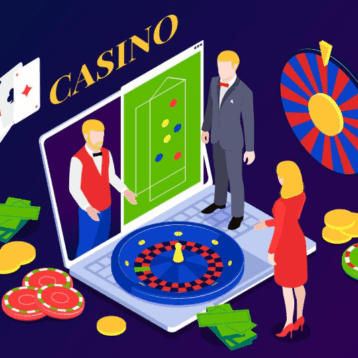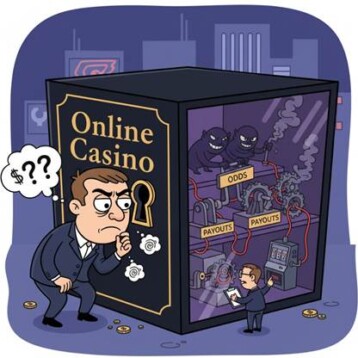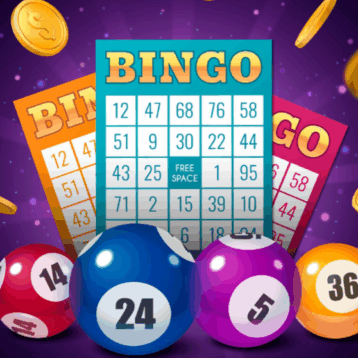Even if you’ve never played them before, most people are aware of online casinos and how popular they are. We get advertisements for them on television, online and on podcasts. We hear on the news about how they’re being regulated, and we hear our friends and family chatting about their favorite games.

For millions of people, though, playing at online casinos is a hobby. They play regularly at various online casinos and have a selection of slots that they enjoy playing. Promotions encourage players to try new games. Sweepstakes casinos expand the industry into states where the legislation on online casinos is still being debated.
Everyone – from the absolute newbies to the slots aficionados – understands the basics of how slot games work. You just set how much you want to bet and push the button to spin the reels. For most people, that’s all they really need or want to know.
Some in-depth information about slots is important and can help players make smarter playing decisions. The Return to Player rate (RTP) is one of those important bits of information. Keep reading to learn what RTP is and why it’s important when playing slots.
What is RTP?
Return to Player rate (RTP) is the term used to explained the amount of money the average player can expect to win back from a specific game if they play it for an extended period of time. Since it is an average, it doesn’t mean that every player will always win that amount back. Some will win more, some won’t win much at all.
The average RTP for a slot machine game is from 94-96%. Let’s use the new Hacksaw Gaming slot Donut Division as an example. Donut Division has an RTP of 94.29%. This means that for every $100 the average player spends on the game, they should win back $94.29 – over time.
Why RTP is important
The Return to Player rate is important because it gives players some idea of the risk associated with each game. If you know one game will likely pay out $87 per $100 and another game will likely pay out $95 per $100, it makes deciding between those two games very easy.
RTP should always be considered alongside a game’s volatility. Volatility describes how regularly a game pays out. A low volatility game will frequently pay out small amounts. A high volatility game won’t pay out often but when it does the wins will be larger. A medium volatility slot falls between the two.
How RTP is set
The Return to Player Rate is set by the game developer. It is coded into the game, along with the random number generator (RNG) software that keeps the games random and fair. Having RNG software and a preset RTP is what keeps online casino games reliable.
Without those two factors, online casinos could program their games to barely pay out, and no one would know for sure if it was a scam or if they were just unlucky. Online casinos have to meet certain standards to be licensed and that means that the games they host also have to meet those standards. Game auditors test all games to verify their stated RTP.
High RTP slots
High RTP slots are a rare option. These elusive games have an RTP of at least 99%. There are some restrictions on using these games to meet wagering requirements on bonus credit. With that exception, everything else about them is the same for players.
One of the leading high RTP slots is NetEnt’s Mega Joker. It has an RTP of 99% and high volatility. The game has a 3×3 structure and 10 paylines. It has a retro feel and aesthetic. The modern twist comes in the form of wilds that can be part of a local progressive jackpot or give boosted wins.
More information about Mega Joker can be found by following this link: https://www.johnslots.com/en/slots/mega-joker/. The site has a demo version of the slot so players can give it a try for free before actually playing. It also has links to reviews of similar high RTP slots so that you can compare them.
Concerns
It was initially believed that all online slots had the same RTP, since it was set by the game developer and audited by a regulatory agency before it was released. This is one of the key reasons that players felt like online slots were more fair than traditional slot machines. With a traditional slot machine, the owner could simply open the back of the machine and change the payout rate. It isn’t possible for an online casino owner to change the code for an online slot game.
In reality, some developers release multiple versions of their games with different RTPs. This isn’t widely publicized and is still being debated. However, some developers are transparent about it. Donut Division, the slot we used as an example above, has a variable RTP. Hacksaw Gaming has released versions of the game with RTPs of 88.24%, 92.26%, 94.29% and 96.30%. Some software providers release games with even more dramatic differences in RTP.
Typically, only the most common RTP is listed. This is a concern for players because that might not be accurate for the version of the game that they’re playing. It can lead to players losing more than they anticipated because they keep playing longer than they should, expecting that a win to balance things out is right around the corner.
As more people become aware of what RTP is and that it can be variable, this information will hopefully have to be clearly displayed by the online casinos.
Final thoughts
The Return to Player rate is an important factor for players. It can help them decide which games are worth playing. Transparency about RTPs is essential. In order to protect themselves and be informed, players should only play at online casinos that openly share that information.










